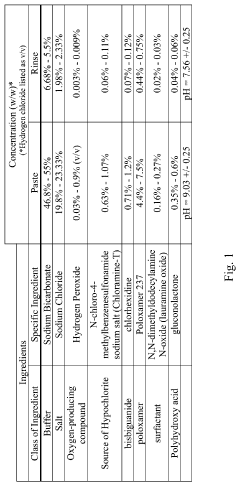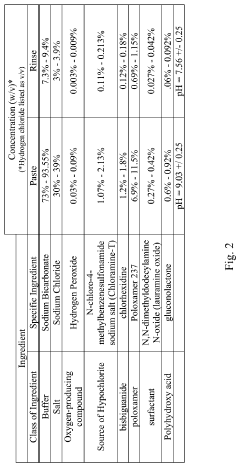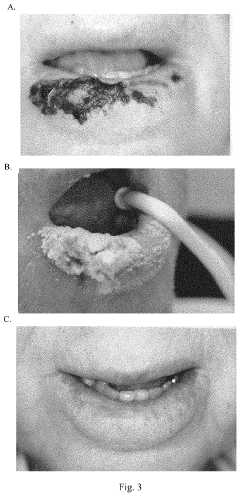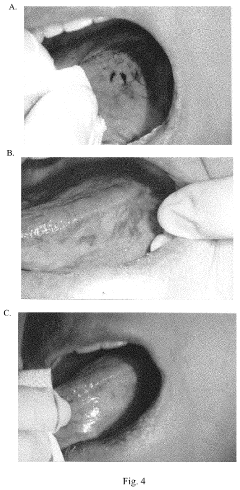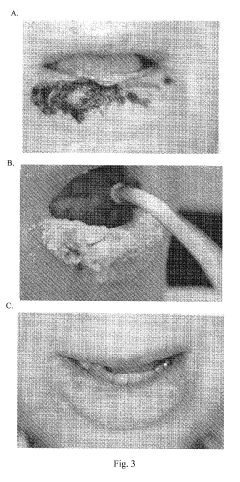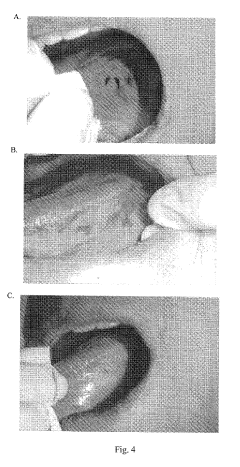How to Use Hypertonic Solutions to Combat Antibiotic Resistance?
Hypertonic Solutions and Antibiotic Resistance Overview
Hypertonic solutions have emerged as a promising approach in combating antibiotic resistance, a growing global health concern. These solutions, characterized by their higher solute concentration compared to the surrounding environment, create an osmotic gradient that can disrupt bacterial cell membranes and inhibit their growth. The concept of using hypertonic solutions against bacteria is not new, but recent advancements have rekindled interest in this strategy as a potential alternative or complement to traditional antibiotics.
Antibiotic resistance occurs when bacteria evolve to withstand the effects of antibiotics, rendering these drugs ineffective in treating infections. This phenomenon has been accelerated by the overuse and misuse of antibiotics in healthcare and agriculture. As a result, many common infections are becoming increasingly difficult to treat, posing a significant threat to public health and modern medicine.
The mechanism by which hypertonic solutions combat antibiotic resistance is multifaceted. Primarily, they exert osmotic stress on bacterial cells, causing water to flow out of the cells and leading to dehydration and potential cell death. This physical mode of action is less likely to induce resistance compared to the specific molecular targets of antibiotics. Additionally, hypertonic solutions can enhance the efficacy of existing antibiotics by increasing their penetration into bacterial cells.
Research has shown that hypertonic solutions can be effective against a wide range of bacteria, including antibiotic-resistant strains. Studies have demonstrated their potential in treating wound infections, respiratory infections, and even biofilms, which are notoriously difficult to eradicate with conventional antibiotics. The versatility of hypertonic solutions extends to their ability to be combined with other antimicrobial agents, creating synergistic effects that can overcome resistance mechanisms.
Despite the promising results, challenges remain in the widespread adoption of hypertonic solutions as a primary treatment for antibiotic-resistant infections. These include optimizing the concentration and composition of solutions for different types of infections, ensuring their safety and efficacy in various clinical settings, and developing appropriate delivery methods. Ongoing research is focused on addressing these challenges and exploring novel applications of hypertonic solutions in combating antibiotic resistance.
As the threat of antibiotic resistance continues to grow, the development of alternative strategies like hypertonic solutions becomes increasingly crucial. This approach represents a shift towards physical and osmotic-based therapies that can complement or potentially replace traditional antibiotic treatments in certain scenarios. The continued exploration and refinement of hypertonic solutions offer hope in the ongoing battle against antibiotic-resistant infections, potentially providing new tools to preserve the efficacy of existing antibiotics and improve patient outcomes.
Market Demand for Alternative Antimicrobial Strategies
The market demand for alternative antimicrobial strategies has been steadily increasing in recent years, driven by the growing global concern over antibiotic resistance. As traditional antibiotics become less effective against evolving pathogens, healthcare providers, pharmaceutical companies, and patients are actively seeking new approaches to combat bacterial infections.
Hypertonic solutions have emerged as a promising alternative strategy in the fight against antibiotic-resistant bacteria. These solutions work by creating an osmotic gradient that draws water out of bacterial cells, disrupting their cellular processes and potentially leading to cell death. This physical mechanism of action is fundamentally different from that of conventional antibiotics, making it less likely for bacteria to develop resistance.
The market for hypertonic solutions in antimicrobial applications is expected to grow significantly in the coming years. This growth is fueled by several factors, including the rising incidence of antibiotic-resistant infections, the increasing awareness of the limitations of traditional antibiotics, and the need for new treatment options in both hospital and community settings.
Healthcare-associated infections (HAIs) represent a substantial market opportunity for hypertonic solutions. These infections, often caused by antibiotic-resistant bacteria, pose a significant challenge to healthcare systems worldwide. Hypertonic solutions could potentially be used as topical treatments for wound care, surgical site infections, and catheter-related infections, addressing a critical need in hospital settings.
In the community setting, there is growing demand for over-the-counter products that can effectively treat minor infections without contributing to antibiotic resistance. Hypertonic solutions could fill this niche, offering consumers a safe and effective alternative for treating minor cuts, scrapes, and skin infections.
The pharmaceutical industry is also showing increased interest in developing hypertonic solution-based products. This interest is driven by the potential for these solutions to address unmet medical needs and the opportunity to diversify product portfolios in the face of expiring patents on traditional antibiotics.
Regulatory agencies and healthcare policymakers are increasingly recognizing the importance of alternative antimicrobial strategies. This recognition is likely to create a more favorable regulatory environment for the development and approval of hypertonic solution-based products, further driving market growth.
As research in this field progresses, the potential applications for hypertonic solutions in combating antibiotic resistance are expanding. From topical treatments to inhalation therapies for respiratory infections, the versatility of hypertonic solutions is opening up new market opportunities across various medical specialties.
Current Challenges in Combating Antibiotic Resistance
Antibiotic resistance poses a significant global health threat, challenging the efficacy of existing treatments for bacterial infections. The current landscape of combating antibiotic resistance faces several critical challenges that demand innovative solutions.
One of the primary obstacles is the rapid evolution of bacteria, which can quickly develop resistance mechanisms against new antibiotics. This evolutionary arms race has led to the emergence of multi-drug resistant (MDR) and extensively drug-resistant (XDR) pathogens, severely limiting treatment options for certain infections.
The overuse and misuse of antibiotics in both human medicine and agriculture have accelerated the development of resistance. Inappropriate prescribing practices, patient non-compliance, and the widespread use of antibiotics in livestock contribute to this problem. Additionally, the lack of effective stewardship programs in many healthcare settings further exacerbates the issue.
The pharmaceutical industry faces significant economic challenges in developing new antibiotics. The high costs of research and development, coupled with the limited market potential due to restricted use of new antibiotics, have led to a decline in antibiotic innovation. This has resulted in a dwindling pipeline of novel antimicrobial agents.
Diagnostic limitations also hinder effective antibiotic use. The lack of rapid, accurate diagnostic tools often leads to empirical treatment with broad-spectrum antibiotics, potentially promoting resistance. Developing point-of-care diagnostics that can quickly identify pathogens and their resistance profiles remains a significant challenge.
The global nature of antibiotic resistance presents additional complexities. Resistant bacteria can spread across borders through travel and trade, necessitating coordinated international efforts. However, disparities in healthcare infrastructure, surveillance systems, and regulatory frameworks between countries make it difficult to implement unified strategies.
Environmental factors contribute to the spread of antibiotic resistance as well. Antibiotic residues in wastewater and agricultural runoff can create reservoirs of resistance genes in the environment. Addressing this issue requires a multisectoral approach involving healthcare, agriculture, and environmental management.
The development of alternative approaches to combat bacterial infections, such as bacteriophage therapy, immunomodulators, and antivirulence strategies, faces regulatory and scientific hurdles. These novel approaches often require new regulatory pathways and extensive clinical validation, slowing their progress to market.
In conclusion, the challenges in combating antibiotic resistance are multifaceted, requiring a coordinated effort from various stakeholders. Addressing these challenges demands innovative solutions, including novel treatment approaches like hypertonic solutions, which may offer new avenues for overcoming antibiotic resistance.
Existing Hypertonic Solution Antimicrobial Approaches
01 Use of hypertonic solutions to combat antibiotic resistance
Hypertonic solutions can be used to combat antibiotic resistance by creating an unfavorable environment for bacterial growth. These solutions increase osmotic pressure, which can disrupt bacterial cell membranes and inhibit their growth. This approach may be particularly effective against antibiotic-resistant strains that have developed mechanisms to survive traditional antibiotic treatments.- Use of hypertonic solutions to combat antibiotic resistance: Hypertonic solutions can be used to combat antibiotic resistance by creating an unfavorable environment for bacterial growth. These solutions increase osmotic pressure, which can disrupt bacterial cell membranes and inhibit their growth. This approach may be particularly effective against antibiotic-resistant strains that have developed mechanisms to survive traditional antibiotic treatments.
- Combination of hypertonic solutions with antibiotics: Combining hypertonic solutions with antibiotics can enhance the effectiveness of antimicrobial treatments. The hypertonic environment may increase the permeability of bacterial cell membranes, allowing antibiotics to penetrate more easily. This synergistic approach can potentially overcome some mechanisms of antibiotic resistance and improve treatment outcomes.
- Development of novel hypertonic formulations: Research is focused on developing new hypertonic formulations specifically designed to address antibiotic resistance. These formulations may include unique combinations of salts, sugars, or other osmotically active compounds that can effectively combat resistant bacteria while minimizing potential side effects on host tissues.
- Mechanisms of bacterial adaptation to hypertonic environments: Understanding how bacteria adapt to hypertonic environments is crucial for developing effective treatments. Research in this area focuses on identifying the genetic and physiological changes that allow bacteria to survive in high osmolarity conditions, which can inform the design of more targeted hypertonic therapies to overcome antibiotic resistance.
- Clinical applications of hypertonic solutions in antibiotic-resistant infections: Hypertonic solutions are being explored for various clinical applications in treating antibiotic-resistant infections. These may include topical treatments for wound infections, inhaled therapies for respiratory infections, or systemic treatments for bloodstream infections. Clinical studies are evaluating the safety and efficacy of these approaches in different patient populations and infection types.
02 Combination of hypertonic solutions with antibiotics
Combining hypertonic solutions with antibiotics can enhance the effectiveness of antimicrobial treatments. The hypertonic environment may increase the permeability of bacterial cell membranes, allowing antibiotics to penetrate more easily. This synergistic effect can potentially overcome some mechanisms of antibiotic resistance and improve treatment outcomes.Expand Specific Solutions03 Development of novel hypertonic formulations
Research is focused on developing new hypertonic formulations specifically designed to address antibiotic resistance. These formulations may include unique combinations of salts, sugars, or other osmotically active compounds that can effectively combat resistant bacteria while minimizing potential side effects on host tissues.Expand Specific Solutions04 Mechanisms of bacterial adaptation to hypertonic environments
Understanding how bacteria adapt to hypertonic environments is crucial for developing effective treatments. Research in this area focuses on identifying the genetic and physiological changes that allow bacteria to survive in high osmolarity conditions, which can inform the design of more targeted hypertonic therapies to overcome antibiotic resistance.Expand Specific Solutions05 Clinical applications of hypertonic solutions in antibiotic-resistant infections
Hypertonic solutions are being explored for various clinical applications in treating antibiotic-resistant infections. These include topical treatments for wound infections, inhaled therapies for respiratory infections, and systemic treatments for bloodstream infections. Clinical trials are ongoing to evaluate the safety and efficacy of these approaches in different patient populations.Expand Specific Solutions
Key Players in Hypertonic Solution Research
The field of hypertonic solutions to combat antibiotic resistance is in its early development stage, with growing market potential due to the increasing global threat of antimicrobial resistance. The market size is expanding as pharmaceutical companies and research institutions invest in this innovative approach. Technologically, it's still evolving, with varying levels of maturity among key players. Companies like Genentech, Novartis AG, and Bayer Intellectual Property GmbH are leading in research and development, while academic institutions such as Cornell University and The University of Queensland are contributing significant advancements. The collaboration between industry and academia is driving progress, with firms like Microbion Corp. and Helperby Therapeutics Group Ltd. focusing on specialized applications of hypertonic solutions in antibiotic resistance.
Genentech, Inc.
Helperby Therapeutics Group Ltd.
Core Innovations in Hypertonic Solution Technology
- A composition comprising chlorhexidine, chloramine T, sodium bicarbonate, potassium bicarbonate, and hydrogen peroxide, formulated as a liquid or paste, providing a broad-spectrum antimicrobial effect while promoting wound healing and pain relief, and not inducing pathogen resistance.
- A composition comprising a mixture of chlorhexidine, chloramine T, sodium bicarbonate, sodium chloride, and other ingredients, formulated as a liquid or paste, which provides broad-spectrum antimicrobial activity against bacteria, viruses, fungi, and protozoa, promoting wound healing and pain relief while maintaining a long shelf life and avoiding resistance induction.
Regulatory Framework for Novel Antimicrobial Treatments
The regulatory framework for novel antimicrobial treatments, including hypertonic solutions to combat antibiotic resistance, is a complex and evolving landscape. Regulatory bodies worldwide are adapting their policies to address the urgent need for new antimicrobial strategies while ensuring patient safety and efficacy.
In the United States, the Food and Drug Administration (FDA) has implemented several initiatives to expedite the development and approval of novel antimicrobial treatments. The Generating Antibiotic Incentives Now (GAIN) Act, enacted in 2012, provides incentives for pharmaceutical companies to develop new antibiotics by offering extended market exclusivity and priority review for qualified infectious disease products (QIDPs).
The European Medicines Agency (EMA) has also taken steps to facilitate the development of new antimicrobial treatments. The agency's adaptive pathways approach allows for early and progressive patient access to new medicines, particularly in areas of high unmet medical need, such as antibiotic resistance.
Regulatory agencies are increasingly recognizing the potential of non-traditional antimicrobial approaches, including hypertonic solutions. These agencies are working to develop appropriate guidelines for evaluating the safety and efficacy of such treatments. For instance, the FDA has issued guidance on the development of non-traditional therapies for bacterial infections, which may be applicable to hypertonic solutions.
International collaboration is crucial in addressing the global challenge of antibiotic resistance. The World Health Organization (WHO) has established the Global Antimicrobial Resistance and Use Surveillance System (GLASS) to support the implementation of the Global Action Plan on Antimicrobial Resistance. This initiative aims to foster a standardized approach to collecting, analyzing, and sharing data on antimicrobial resistance across countries.
Regulatory bodies are also focusing on antimicrobial stewardship programs to promote the appropriate use of existing antibiotics and reduce the development of resistance. These programs often include guidelines for healthcare providers on the judicious use of antibiotics and the implementation of alternative treatments, such as hypertonic solutions, where appropriate.
As research on hypertonic solutions and other novel antimicrobial approaches progresses, regulatory frameworks will likely continue to evolve. Agencies may need to develop new guidelines specific to these treatments, addressing unique aspects such as formulation, administration, and potential interactions with existing antibiotic regimens. The regulatory landscape will need to balance the urgent need for new antimicrobial strategies with the rigorous safety and efficacy standards required for all medical treatments.
Environmental Impact of Hypertonic Solution Usage
The use of hypertonic solutions to combat antibiotic resistance presents potential environmental implications that warrant careful consideration. These solutions, typically containing high concentrations of salts or other solutes, may impact ecosystems when released into the environment. One primary concern is the effect on aquatic systems, as hypertonic solutions can alter the osmotic balance in water bodies. This disruption may lead to stress or mortality in aquatic organisms, particularly those sensitive to changes in salinity or osmotic pressure.
Furthermore, the introduction of hypertonic solutions into soil environments could affect soil microbial communities, which play crucial roles in nutrient cycling and overall ecosystem health. Changes in soil salinity or osmotic potential may shift microbial populations, potentially altering soil fertility and plant growth patterns. This could have cascading effects on terrestrial ecosystems and agricultural productivity.
The production and disposal of hypertonic solutions also raise environmental concerns. Manufacturing processes may require significant water and energy inputs, contributing to resource depletion and greenhouse gas emissions. Proper disposal methods are essential to prevent environmental contamination, as improper discharge could lead to localized areas of high salinity or altered chemical composition in natural habitats.
However, it is important to note that the environmental impact of hypertonic solutions may be mitigated through careful management and innovative approaches. For instance, developing biodegradable or naturally derived hypertonic agents could reduce long-term environmental persistence. Additionally, implementing closed-loop systems for the use and recycling of these solutions in medical or industrial settings could minimize their release into the environment.
Research into the ecological effects of hypertonic solutions is ongoing, with studies focusing on their fate and behavior in different environmental compartments. Understanding these dynamics is crucial for developing sustainable practices and regulations surrounding their use. As the application of hypertonic solutions in combating antibiotic resistance grows, it becomes increasingly important to balance their potential benefits with environmental stewardship.
In conclusion, while hypertonic solutions offer promising avenues for addressing antibiotic resistance, their environmental impact must be carefully managed. This necessitates a holistic approach that considers the entire lifecycle of these solutions, from production to disposal, and emphasizes the development of environmentally friendly alternatives and responsible usage practices.
